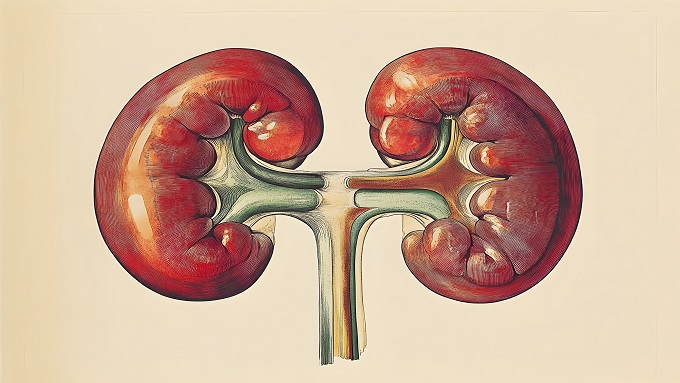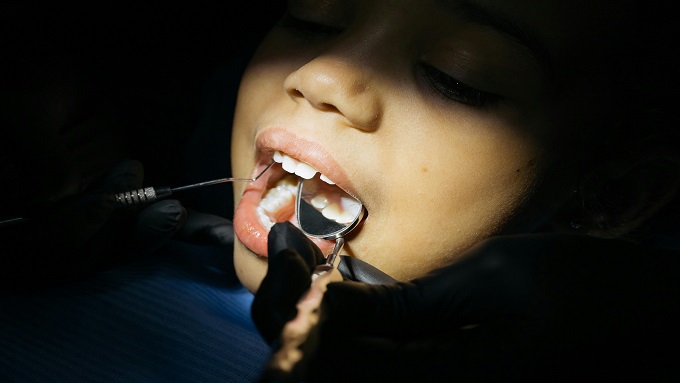THE USE OF GLUCOSAMINE AND THE INCREASE OF IOP: A LITERATURE REVIEW
Versions
- 2024-04-03 (2)
- 2022-07-09 (1)

Downloads
Highlights:
1. There are differences in the result of the use of glucosamine and the increase of intraocular pressure.
2. There are many other factors that may contribute to the increase in the intraocular pressure other than the use of glucosamine such as races, genetics, different dose, and duration of glucosamine use.
Abstract:
Background: Glucosamine is an amino monosaccharide that can directly stimulate the synthesis of glycosaminoglycans in the cartilage. It has been widely used as an osteoarthritis treatment. However, several literatures show the possible side effects of glucosamine, such as increased intraocular pressure (IOP). Objective: The objective of this study was to determine if there was any correlation between the use of glucosamine and the increase in IOP. Material and Method: This was a descriptive qualitative study that implied a systematic review design. The study sample consisted of patients with osteoarthritis (OA) and glaucoma in Iran, Indonesia, Thailand, the USA, and India between 2013 and 2018. The literature search was conducted on a database (PubMed and Google Scholar) and selected using inclusion and exclusion criteria. Discussion: The research identified 5 studies on the use of glucosamine and the increase of IOP. Two articles provide significant results on the correlation between the use of glucosamine and the increase of IOP (P < 0.05). In addition, two studies showed significant IOP reduction outcomes after discontinuation of glucosamine (P < 0.05). A case series indicated an increase in IOP during the 6th month of glucosamine use but still at normal value. Conclusion: Many other factors contribute to IOP growth, other than the use of glucosamine. Therefore, a large-scale randomized clinical trial or a multicentre cohort study using the same parameters is still needed to improve the quality of the subsequent systematic review
Baek, S. Kee, C. Suh, W. 2015. Longitudinal analysis of age-related changes in intraocular pressure in South Korea. Eye, 29(5): 625-629. doi: 10.1038/eye.2015.11.
Bruyère, O. Cooper, C. Pelletier, J.P. Branco, J. Luisa, M.B. Guillemin, F. et al., 2014. An algorithm recommendation for the management of knee osteoarthritis in Europe and internationally: A report from a task force of the European Society for Clinical and Economic Aspects of Osteoporosis and Osteoarthritis (ESCEO), Seminars in Arthritis and Rheumatism, 44(3): 253–263. doi: 10.1016/j.semarthrit.2014.05.014.
Bruyère, O. Cooper, C. Al-Daghri, N.M. Dennison, E.M. Rizzoli, R., Reginster, J.Y., 2018. Inappropriate claims from non-equivalent medications in osteoarthritis: a position paper endorsed by the European Society for Clinical and Economic Aspects of Osteoporosis, Osteoarthritis and Musculoskeletal Diseases (ESCEO). Aging clinical and experimental research, 30(2): 111–117. doi: 10.1007/s40520-017-0861-1.
Esfandiari, H. Pakravan, M. Zakeri, Z. Ziaie, S. Pakravan, P. Ownagh, V., 2017. Effect of glucosamine on intraocular pressure: A randomized clinical trial. Eye, 31(3): 389–394. doi: 10.1038/eye.2016.221.
Esfandiari, H. Loewen, N.A., 2019. Effect of glucosamine on intraocular pressure. In Handbook of Nutrition, Diet, and the Eye. Elsevier: 333–338. doi: 10.1016/B978-0-12-815245-4.00020-X.
Han, X., Niu, Y., Guo, X., Hu, Y., Yan, W., He. M., 2016. Age-related changes of intraocular pressure in elderly people in Southern China: Lingtou eye cohort study. PLOS ONE. Edited by J. F. Hejtmancik, 11(3): e0151766. doi: 10.1371/journal.pone.0151766.
Ho, H. Shi, Y. Chua, J. Tham, Y. Lim, S. Aung, T. Wong, T. Cheng, C., 2017. Association of systemic medication use with intraocular pressure in a multiethnic asian population. JAMA Ophthalmology, 135(3): 196.
Jerosch, J., 2011. Effects of glucosamine and chondroitin sulfate on cartilage metabolism in OA: Outlook on other nutrient partners especially omega-3 fatty acids. International Journal of Rheumatology, 2011: 1–17. doi: 10.1155/2011/969012.
Kucharz, E.J. Kovalenko, V. Szanto, S. Bruyere, O. Cooper, C. Reginster, J.Y., 2016. A review of glucosamine for knee osteoarthritis: Why patented crystalline glucosamine sulfate should be differentiated from other glucosamines to maximize clinical outcomes., Current medical research and opinion, 32(6): 997–1004. doi: 10.1185/03007995.2016.1154521.
Kusumawardhany, R. 2017. The relationship between glucosamine supplementation and increased intraocular pressure in patients with open angle glaucoma (at Dr. Wahidin Soediro Husodo Hospital). Qanun Medika - Medical Journal Faculty of Medicine Muhammadiyah Surabaya, 1(02). doi: 10.30651/qm.v1i02.405.
Lim, Y.Z. Hussain, S.M. Cicuttini, F.M. Wang, Y., 2019. Nutrients and dietary supplements for osteoarthritis. in bioactive food as dietary interventions for arthritis and related inflammatory diseases. Elsevier: 97–137. doi: 10.1016/B978-0-12-813820-5.00006-4.
Murphy, R.K. Ketzler, L. Rice, R. Johnson, S.M. Doss, M.S. Jaccoma, E.H., 2013. Oral glucosamine supplements as a possible ocular hypertensive agent. JAMA Ophthalmology, 131(7): 955. doi: 10.1001/jamaophthalmol.2013.227.
Nagaoka, I. Igarashi, M. Sakamoto, K., 2012. Biological activities of glucosamine and its related substances. marine medicinal foods - implications and applications - Animals and Microbes: 337-352. doi: 10.1016/B978-0-12-416003-3.00022-6.
Pacella, E. Pacella, F. De Paolis, G. Parisella, F. Turchetti, P. Anello, G. Cavallotti, C. 2015. Glycosaminoglycans in the human cornea: Age-related changes. Ophthalmology and Eye Diseases, 7: OED.S17204.
Pescosolido, N. Cavallotti, C. Rusciano, D. Nebbioso, M., 2012. Trabecular meshwork in normal and pathological eyes. Ultrastructural Pathology, 36(2): 102-107.
Reginster, J. Neuprez, A. Lecart, M. Sarlet, N. Bruyere, O., 2012. Role of glucosamine in the treatment for osteoarthritis. Rheumatology International, 32(10): 2959-2967. doi: 10.1007/s00296-012-2416-2.
Suhasini, N. Harini, M. Rajasekhar, T., 2018. Role of glucosamine sulphate supplements on intra ocular pressure given in osteoarthritis treatment– a case series. Journal of Medical Science and clinical Research, 6(10). doi: 10.18535/jmscr/v6i10.113.
Vranka, J. Kelley, M. Acott, T. Keller, K., 2015. Extracellular matrix in the trabecular meshwork: Intraocular pressure regulation and dysregulation in glaucoma. Experimental Eye Research, 133: 112-125.
Williams, C.,Ampat, G., 2022. Glucosamine sulfate, StatPearls.
Yuenyongviwat, V. Kiddee, W. Tangtrakulwanich, B., 2019. Effect of glucosamine sulfate on intraocular pressure in patients with knee osteoarthritis: A prospective randomized controlled trial. Journal Français d'Ophtalmologie, 42(7): 711–715. doi: 10.1016/j.jfo.2019.03.005.
Copyright (c) 2022 Wega Yusan Wira Perdana, Pirlina Umiastuti, Nabila Putri Wardhani, Amirah Jasmine, Nur Milati Bani Mostavan, Nadhilah Putri Ghaisani, Audi Salman Faza

This work is licensed under a Creative Commons Attribution 4.0 International License.
1. The journal allows the author(s) to hold the copyright of the article without restrictions.
2. The journal allows the author(s) to retain publishing rights without restrictions.
3. The legal formal aspect of journal publication accessibility refers to Creative Commons Attribution 4.0 International License (CC-BY).
































